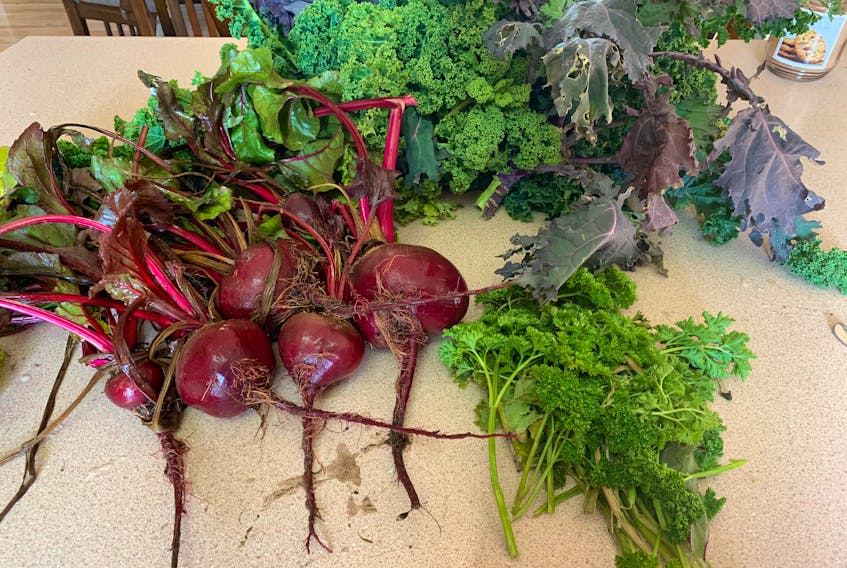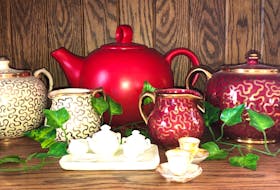Since she was 16 years old, Becky Boutilier has been playing in the dirt and loving every second of it. So much so, she has made it her full-time career.
Boutilier is a Red Seal horticulturist who studied at the Nova Scotia Agricultural College in Truro. Since then, the Head of Chezzetcook, N.S. woman works with Clintar, a large landscape company, estimating, designing, consulting, and gardening.
“Gardening and plant care are a true passion of mine,” she says.
Did you know gardening doesn’t just have to be a summer activity? It can be done both indoors and outdoors in the winter as well.
Boutilier calls indoor gardening a form of "soul food." There is something about living with plants that is both elegant and calming, she says.
An indoor garden cleans the air, allows for aesthetic pleasure, and most importantly, gives off a positive energy transfer in the winter months, when all of our outdoor plants are dormant.
"It just makes a person happier," she says.
Like growing herbs? Having some pots inside means you'll have fresh ingredients for lunch and tasty teas, she says.
Boutilier says her indoor garden is all over her house, with succulents in her office, herbs in the kitchen, a summer planter overwintering in the entry, and ferns hanging from the ceiling. Soon, it will be time to start getting seeds to germinate and growing for transplanting in the spring.
Getting seeds ready in winter, she says, is one of the most challenging parts of winter gardening.
"You need to have a space that is clean, free of a cold draft and animals, and it’s always nice to have a dedicated space to do this, but it is not necessary," she says.
"If you have an entire room to do this in, you are ahead of the game and should consider investing in growing lights, shelves, and heating pads."
If you have limited space, a small tented indoor greenhouse with shelves placed beside a draftless area will do just fine, she adds.
“The beautiful thing about growing is that you can do it on any scale. This hobby can suit anyone,” she says.
Getting started

If you are thinking about having an indoor garden, Boutilier offers the following tips and suggestions, regardless of your experience:
1. Consider Zen gardening to start. Succulents are very forgiving and great for beginner gardeners. They require very little maintenance and are beautiful.
2. Keep all your plants away from a cold draft. This is one of the leading reasons for a failed indoor plant, especially in the winter.
3. Keep your plants out of reach of pets whenever possible. If the pet is indoor/outdoor, they can bring in spider mites and other itsy-bitsy critters that will make short work of killing your plant. Cats have been known to use soil as a personal washroom and chew on leaves. Unfortunately, a lot of house plants can make our pets sick. The Poinsettia is a perfect example of a flower we keep inside over the winter that is poisonous to cats.
4. Research the watering and fertilizing recommendations and schedules of the plants you are growing. The requirements for optimum growth vary dramatically from one plant to another. If you currently grow succulents and herbs and treat them both the same, you may wonder why one is doing great and the other is barely holding on - there's your answer.
5. If you are growing indoor flowers like gerbera daisies and orchids, do not forget to deadhead them. You can cut the flowers off and make a centerpiece - just be sure to remove spent flowers before they go to seed to promote continuous blooming.
6. Plants grow, and many people forget that. The roots need the room, too. When humans get bigger, we buy bigger clothes - similarly, plants need bigger pots. If the pot size is not addressed, the plant will become root-bound and growth will stop.
7. Microgreens and herbs are a favourite of Boutlilier's to harvest indoors during the winter months. A fun project is to make a plant scape in an old aquarium - just put some drainage rock on the bottom of the tank, then fill one-quarter with potting soil. Plant your herb seeds, water, and wait, she says. You can easily use sunlight from a window or purchase a LED grow light to put over the top. It’s pretty and being able to see the roots through the glass adds an element of beauty to the display.

Winter gardening does not have to be done indoors, says Boutilier.
Plant witch hazel, crocuses, holly, evergreens, red dogwood, and Erica for winter interest. These plants, and many more, will have you smiling throughout the season, says Boutilier.
She has also planted cold-season crops in her garden last spring and late summer. This meant she could harvest fresh vegetables and herbs from her outdoor garden at Christmas and in the new year. Her kale, beets, carrots, Brussels sprouts, parsley, and rosemary were all good for the harvest up until the first heavy snow on Feb. 7, she says.
“My carrots were small, as I did a second planting at the end of July, but it was great to have them over the winter months,” says Boutilier.
Every time you plant a seed, you are helping reduce our carbon footprint, says Boutilier. Gardening is a beautiful and rewarding pastime, she adds.
"Winter gardening is especially helpful in my opinion, as it reflects a tenacious attitude toward how we see the world, showing them just because conditions are not perfect, we don’t give up," she said.
Boutilier says her nephew started a garden in February and, as he was choosing his plants, he said he loved how plants made him feel.
“It reassures me that it is just as important to acknowledge the feel of plants as its function,” she says.









